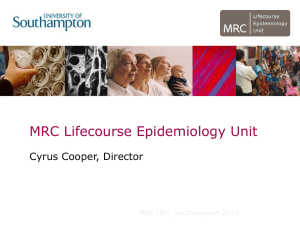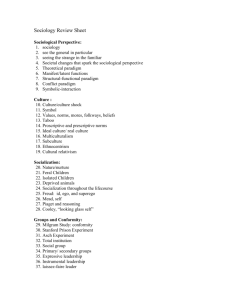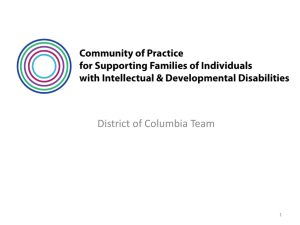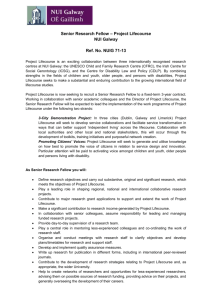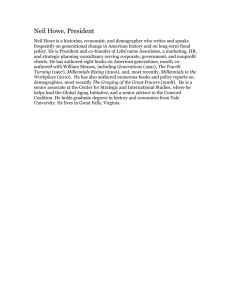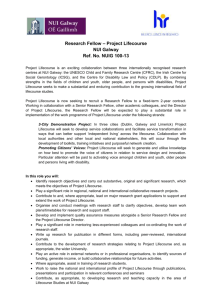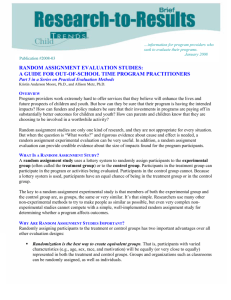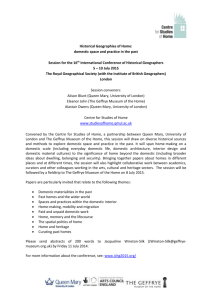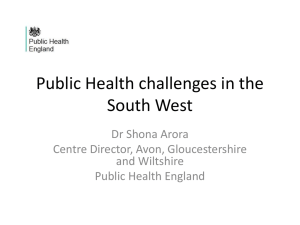Guide to applying the framework to policy and practice
advertisement
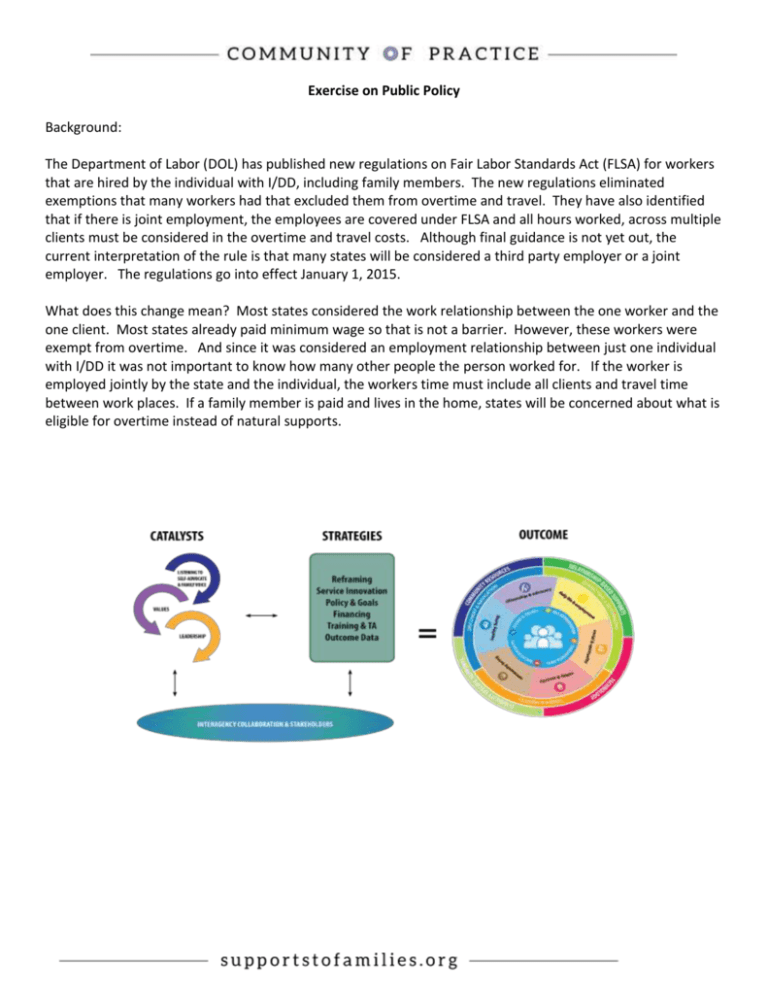
Exercise on Public Policy Background: The Department of Labor (DOL) has published new regulations on Fair Labor Standards Act (FLSA) for workers that are hired by the individual with I/DD, including family members. The new regulations eliminated exemptions that many workers had that excluded them from overtime and travel. They have also identified that if there is joint employment, the employees are covered under FLSA and all hours worked, across multiple clients must be considered in the overtime and travel costs. Although final guidance is not yet out, the current interpretation of the rule is that many states will be considered a third party employer or a joint employer. The regulations go into effect January 1, 2015. What does this change mean? Most states considered the work relationship between the one worker and the one client. Most states already paid minimum wage so that is not a barrier. However, these workers were exempt from overtime. And since it was considered an employment relationship between just one individual with I/DD it was not important to know how many other people the person worked for. If the worker is employed jointly by the state and the individual, the workers time must include all clients and travel time between work places. If a family member is paid and lives in the home, states will be concerned about what is eligible for overtime instead of natural supports. Guide to Applying the LifeCourse Framework to Policy and Practice Voice of Self-Advocates and Families: How are families and individuals being heard in this policy decision? Is the discussion consistent with LifeCourse elements (all, trajectory, life-stages, life-domains)? Are participants recipient of all those affected or who could potentially be affected? Guiding Values and Principles: What are the values and principles guiding the conversation? Is the discussion in your state consistent with LifeCourse beliefs and principles? Leadership: Who is leading this charge? Is the leadership using the LifeCourse principles in discussions and decisionmaking? External Pressures: What are the external pressures and how are they driving the urgency or timing of policy or practice innovations? Collaboration and Partnerships: What partners do you pull together and when? How are stakeholders representing the LifeCourse elements (all within developmental disability and other populations, all age groups, all types of government or support entities)? Communication (Reframing and Messaging): What is the “message that you want to convey?” How are stakeholders informed about the perspective policy or innovation change? What is the process for informing the decisions around the policy or practice and its implementation? How are they informed about the final decision? How are stakeholders representing the LifeCourse elements included (all within developmental disability and other populations, all age groups, all types of government or support entities)? Policy and Directives: What is the policy issue being discussed or developed? Are the discussions and resulting policy decisions consistent with the LifeCourse framework (100%, trajectory, life domains, individual and family roles and outcomes, community life, integrated supports, three support strategies/info/peer support/goods and services)? Innovations, Models, and Practices: What is the innovations, models, or practices being considered? Do they consider the lifecourse elements (100%, trajectory, life domains, individual and family roles and outcomes, community life, integrated supports, three support strategies/info/peer support/goods and services)? Financing: What are the fiscal implications for the innovation including the cost for infrastructure, professional development and quality assurance of the delivery system? Will the fiscal implications impact the LifeCourse elements (trajectory, all, across age groups, all life domains)? Infrastructure: Do you have the infrastructure to delivery the policy or practice such as the information management, service definitions, rate methodology, service planning, utilization management, quality assurance? How are components of the infrastructure consistent with the LIfeCourse framework? Training and Technical Assistance: How are you educating and preparing attitude, skills and knowledge of all stakeholders on the new policy and practices (policy managers, service provider, service recipients and others)? How are the content and dissemination methods consistent with the LIfeCourse framework? Quality Assurance and Outcome Data: What type of information is being collected and how and with whom are you using it? Is it consistent with the overall principles of the LIfeCourse framework? Drafted May 13, 2014
